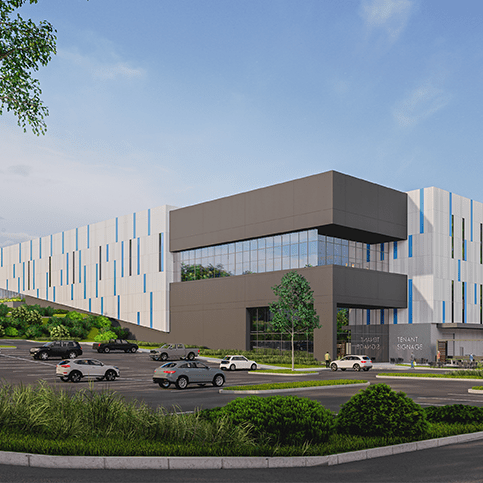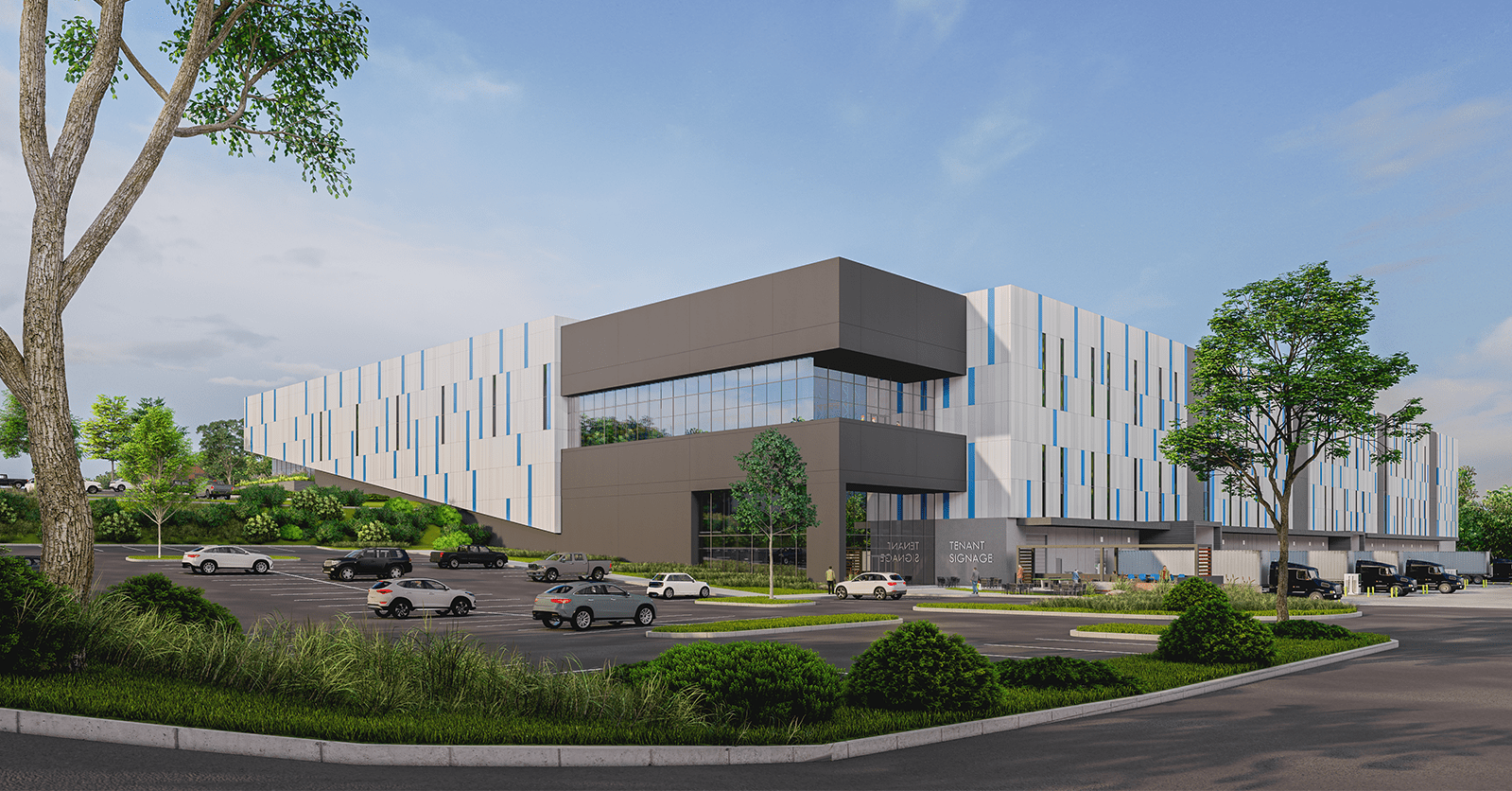Our team recently lead a webinar hosted by SIOR that explored an innovative prototype design centered on overcoming topographic site challenges. Our hour-long webinar featured a brief presentation on our split-level design concept followed by a panel discussion with partners Jason Rich, CEO, Snyder Langston, and Mike Longo, Senior Vice President, CBRE Capital Markets.
We kicked off the presentation with an introduction on our split-level prototype and outlined key considerations for how this concept could be applied at a site with topographic challenges in today’s market. The pinnacle of this design is using grading to a site’s advantage. It involves using multistory technology along with site grading strategies to maximize build coverage and eliminate the need for ramps or elevated trucking courts.
The result is a state-of the-art facility with two clear access points, grade-level truck courts, ample parking, and space for modern amenities like patios and ambient lighting. The space can be divided into multiple units for tenants to operate independently, including employee amenity and outdoor areas. While this concept can involve slightly higher development costs, there are numerous long-term costs benefits at play that can ultimately outweigh the possible site challenges.
To dive deeper into site considerations and hurdles, we opened the discussion up to our panel to give perspectives from various corners of the market when considering a topographically challenged site. Our team outlined ideal parameters for using this design approach, including ensuring zoning restrictions, the elimination of fire access roads around the perimeter, and allowing for a rectangular building pad to maximize build coverage.
“Having around 40-50’ of grade difference across the site is key. This can only be 5-10% on average which may not seem like a lot but across a 600’ deep site it provides what’s needed for the split level to work well. You’re getting twice the building square footage with half the land,” explains Luke.
When considering where this project is best suited, Mike weighed in with perspective on how this concept can really thrive in coastal markets with heavy density. Particularly, he sees this design style taking off in areas with high property costs and limited parcel availability as it gives clients more feasibility on land- constrained sites. Overall, the goal is to help make challenging sites more cost-effective and maximize value over time.
“The key point to really highlight on this is about helping sites that are already expensive and challenging to make them better by adding floor area ratio (FAR) that on an incremental basis actually helps reduce some of the overall costs on an FAR percentage,” says Mike.
In terms of potential construction challenges, Jason provided insight on the best approach to a successful split-level build. While due diligence is often a foundational piece of any development, he says taking additional and early steps here can make all the difference. Noting that this concept is not a one-size-fits-all solution, he stresses the importance of a highly diverse and specialized team working cohesively to maximize square footage and foresee major costs or site accommodations.
To get a better picture of how this split-level design concept differs from traditional industrial design, we highlighted how split-level best leverages sunken costs. This means a client can secure a site half the size without sacrificing the square footage. In places with high land costs, this can ultimately offset higher building costs.
It’s important, however, to note that this design is not without a few extra challenges. Considering current market changes, it is important for prospective buyers to complete their due diligence up front. With the market showing signs of stabilizing, Mike reflects on how he sees this concept taking off with buyers.
To close our panel, we reiterated how this not your average multistory technology, but rather a concept to resolve site conditions. This rewarding construction challenge is an innovative design solution for sites that may have been previously overlooked due to their topographic challenges. With the guidance of a knowledge team of experts, a split-level concept can be a dynamic, cost-effective approach for even the most challenging sites.





